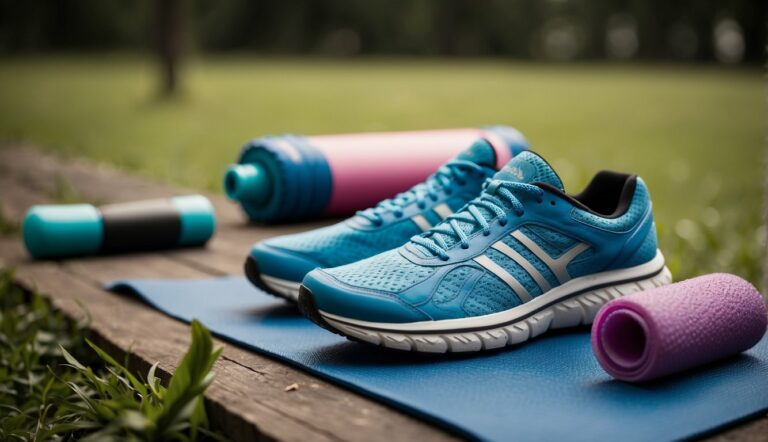6 Strategies to Squeeze More Running into Short Winter Days
As winter tightens its grip, the days get shorter, and the nights longer. For many runners, this means fewer opportunities to hit the pavement during daylight hours.
But don’t hang up your running shoes just yet!
With a little creativity and planning, you can maintain your running routine throughout the colder months. Here are six strategies to help you squeeze more running into these short winter days.
1. Maximize Daylight Hours
The key to running safely in winter is visibility, both seeing and being seen. With limited daylight, it’s crucial to plan your runs when the sun is up.
This might mean adjusting your daily schedule to fit in a run during your brightest hours. For example, if you’re working from home, consider starting your workday a little earlier or later to free up time when the sun is out.
Practical Tips:
- Check the Weather: Always check the forecast. A sunny midday run can be more achievable than you think.
- Be Flexible: If possible, have a flexible work schedule that allows you to step out for a run when the sun decides to make an appearance.
- Safety First: If you must run in dim light, wear bright, reflective gear and consider a headlamp or handheld light to improve visibility.

2. Embrace the Lunchtime Jog
One of the most effective ways to ensure you get your runs in is to use your lunch break.
A “runch,” as it’s affectionately known, can be a great way to break up your day, boost your mood, and take advantage of whatever light is available.
Practical Tips:
- Pack Smart: Bring your running gear to work, so you’re always ready for a spontaneous run.
- Freshen Up: Have a plan for post-run. This could mean access to a shower or a simple refresh kit in your car or office with wipes, deodorant, and a change of clothes.
- Eat Wisely: A heavy lunch before a run can feel uncomfortable, so opt for a light, energizing meal or snack, and save your main meal for after the run.

3. Be Prepared for the Dark
Even with the best-laid plans, sometimes a run during daylight just isn’t possible. When you find yourself lacing up after the sun has set, it’s essential to prioritize safety and visibility.
Running in the dark can be invigorating, but it comes with its own set of challenges.
Practical Tips:
- Invest in Visibility Gear: Reflective vests, blinking lights, and headlamps are crucial for being seen. A study by the National Highway Traffic Safety Administration found that most pedestrian fatalities in traffic crashes occur in the dark, with a high percentage happening outside of intersections, making visibility crucial for safety.
- Choose Well-Lit Routes: Opt for streets that are well-lit and have sidewalks or designated running paths. This not only helps you see where you’re going but also makes you more visible to others.
- Run Against Traffic: When running on the road, face the oncoming traffic. This increases your reaction time if you need to move out of the way of an inattentive driver.
- Stay Alert: Leave the headphones at home. Your ears are an important tool for staying aware of your surroundings when visibility is low.

4. Indoor Training Options
When the weather outside is frightful, and the daylight scarce, indoor training can be delightful.
There’s no need to battle the elements when you can get a solid run in the comfort of the indoors.
Practical Tips:
- Treadmill Running: While some runners have a love-hate relationship with the “dreadmill,” it’s a safe and convenient way to get miles in. To keep it interesting, try varying the pace and incline or doing interval workouts.
- Join a Gym: Access to a gym can provide not only a treadmill but also other cardio equipment options like stationary bikes or elliptical machines, which can be a great complement to your running routine.
- Indoor Tracks: Some community centers, colleges, or fitness clubs have indoor tracks. These can be a great alternative to the monotony of a treadmill.
- Virtual Running Programs: Many apps and online platforms offer virtual running experiences, complete with scenic views and coaching tips to keep you engaged.

5. Weekend Running Adventures
Weekends can be a goldmine for runners during the winter. With more free time and potentially more daylight, you can plan longer or more adventurous runs without the constraints of your weekday schedule.
This is the perfect time to explore new trails, join running groups, or simply enjoy a leisurely jog without the rush.
Practical Tips:
- Plan Ahead: Use the weekdays to plan your weekend running adventures. Look for new routes, check the weather, and arrange meet-ups with friends or local running groups.
- Long Run Focus: Shift your longer runs to the weekend when you have more time to recover and can run during the warmest part of the day.
- Social Runs: Joining a running club or group can provide motivation and make the miles fly by. Plus, there’s safety in numbers, especially on winter runs.
- Family Inclusion: If you have family commitments, consider ways to include them. Running while your kids bike alongside or exploring new parks can be fun for the whole family.
6. Incorporate Cross-Training
Cross-training is an excellent way to maintain fitness and give your running muscles a break, especially when it’s dark or icy outside.
Activities like swimming, indoor cycling, yoga, or strength training can enhance your running performance and reduce the risk of injury by balancing your muscle groups.
Practical Tips:
- Home Workouts: Invest in some basic equipment like a yoga mat, resistance bands, or free weights to do strength training at home.
- Online Fitness Classes: There are countless online platforms offering a variety of workouts. Many are free or offer trial periods, so you can mix things up and keep your routine fresh.
- Swimming: If you have access to an indoor pool, swimming is a great low-impact workout that can improve your cardiovascular fitness and muscle strength.
- Cycling: Indoor cycling, whether on a stationary bike or in a spin class, provides a high-intensity cardio workout that’s easy on the joints.
By incorporating these activities into your routine, you can stay active and keep your running muscles engaged, even when you’re not hitting the pavement.
Conclusion
Winter running requires a shift in mindset and strategy, but it doesn’t have to mean a pause in your progress. By maximizing daylight hours, embracing lunchtime runs, being prepared for the dark, exploring indoor training options, making the most of weekends, and incorporating cross-training, you can adapt to the season and even enjoy its unique running experiences.
Remember, the key to winter running success is flexibility and preparation. Each short day is an opportunity to challenge yourself, try something new, and appreciate the quiet beauty of a winter landscape. So, layer up, plan smart, and keep those feet moving. Spring will be here before you know it, and you’ll be grateful for the winter miles that kept your running journey alive.
Happy running, and stay warm out there!






